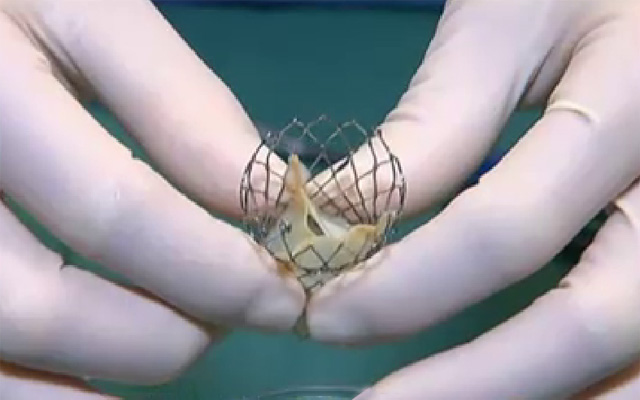![]()
You are here
GUH Cardiac team carry out new heart valve procedure

The cardiac team at University Hospital Galway were the first in Ireland to introduce the latest technology in cardiac care. Dr. Darren Mylotte at UHG Cardiology Department, implanted the CoreValve® Evolut™ R System for transcatheter aortic valve implantation (TAVI) for the first time in Ireland, positioning UHG at the cutting edge of valvular heart technology.
Dr Mylotte said that as he was involved in the first in human implant of this device in Canada, he was delighted that to have this technology to Ireland. “The new device eliminates the need for open heart surgery for cardiac valve replacement and allows a speedier recovery. On Friday, (20th February 2015) we inserted an aortic valve in our patient with this new technology. “We made a small incision in the groin area and then, using this new, sophisticated catheter, we brought the aortic valve up to the heart. The technology allowed us to then position the valve correctly. “The patient went home on Monday and is doing well. Ten years ago we would have had to carry out open heart surgery to insert this valve and the patient would have required a few weeks inpatient care before being discharged,” he explained.
The self-expanding valve offers advanced valve performance and deliverability during the procedure, while providing the option to recapture the valve back into the catheter and move the valve to a new position either above or below its current placement, if needed.
UHG developed a state-of-the art and the vitally important TAVI programme over the past twelve months. Mr Maurice Power, Acting CEO for Saolta said that the innovative approach to cardiac treatment positioned Galway University Hospital as a pioneer in patient care. “Ultimately our remit is to provide the best care available for our patients. By embracing new technology we can achieve this in a way that allows the patient to recover quicker and facilitates the care of more patients in a cost effective and efficient way. "This new device is a tangible example of how our medical and surgical teams work closely with the medical technology industry and the local universities to help them research and develop new devices that are practical and effective in treating patients,” he said.
